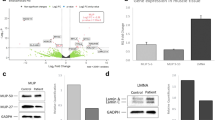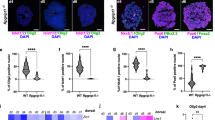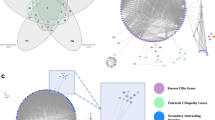Abstract
In the context of a comprehensive research project, investigating novel autosomal recessive intellectual disability (ARID) genes, linkage analysis based on autozygosity mapping helped identify an intellectual disability locus on Chr.12q24, in an Iranian family (LOD score=3.7). Next-generation sequencing (NGS) following exon enrichment in this novel interval, detected a nonsense mutation (p.Q1010*) in the CLIP1 gene. CLIP1 encodes a member of microtubule (MT) plus-end tracking proteins, which specifically associates with the ends of growing MTs. These proteins regulate MT dynamic behavior and are important for MT-mediated transport over the length of axons and dendrites. As such, CLIP1 may have a role in neuronal development. We studied lymphoblastoid and skin fibroblast cell lines established from healthy and affected patients. RT-PCR and western blot analyses showed the absence of CLIP1 transcript and protein in lymphoblastoid cells derived from affected patients. Furthermore, immunofluorescence analyses showed MT plus-end staining only in fibroblasts containing the wild-type (and not the mutant) CLIP1 protein. Collectively, our data suggest that defects in CLIP1 may lead to ARID.
Similar content being viewed by others
Log in or create a free account to read this content
Gain free access to this article, as well as selected content from this journal and more on nature.com
or
References
Kaufman L, Ayub M, Vincent JB : The genetic basis of non-syndromic intellectual disability: a review. J Neurodev Disorders 2010; 2: 182–209.
Najmabadi H, Motazacker MM, Garshasbi M et al: Homozygosity mapping in consanguineous families reveals extreme heterogeneity of non-syndromic autosomal recessive mental retardation and identifies 8 novel gene loci. Hum Genetics 2007; 121: 43–48.
Najmabadi H, Hu H, Garshasbi M et al: Deep sequencing reveals 50 novel genes for recessive cognitive disorders. Nature 2011; 478: 57–63.
Kuss A-W, Garshasbi M, Kahrizi K et al: Autosomal recessive mental retardation: homozygosity mapping identifies 27 single linkage intervals, at least 14 novel loci and several mutation hotspots. Hum Genetics 2011; 129: 141–148.
Jaworski J, Hoogenraad CC, Akhmanova A : Microtubule plus-end tracking proteins in differentiated mammalian cells. Int J Biochem Cell Biol 2008; 40: 619–637.
Coquelle FM, Caspi M, Cordelières FP et al: Lis1, Clip-170's key to the dynein/dynactin pathway. Mol Cell Biol 2002; 22: 3089–3102.
Komarova YA, Akhmanova AS, Kojima S-I, Galjart N, Borisy GG : Cytoplasmic linker proteins promote microtubule rescue in vivo. J Cell Biol 2002; 159: 589–599.
Akhmanova A, Mausset-Bonnefont A-L, Van Cappellen W et al: The microtubule plus-end-tracking protein clip-170 associates with the spermatid manchette and is essential for spermatogenesis. Genes Dev 2005; 19: 2501–2515.
Swiech L, Blazejczyk M, Urbanska M et al: Clip-170 and Iqgap1 cooperatively regulate dendrite morphology. J Neurosci 2011; 31: 4555–4568.
Neukirchen D, Bradke F : Cytoplasmic linker proteins regulate neuronal polarization through microtubule and growth cone dynamics. J Neurosci 2011; 31: 1528–1538.
Rüschendorf F, Nürnberg P : Alohomora: a tool for linkage analysis using 10k SNP array data. Bioinformatics 2005; 21: 2123–2125.
Garshasbi M, Motazacker MM, Kahrizi K et al: SNP array-based homozygosity mapping reveals MCPH1 deletion in family with autosomal recessive mental retardation and mild microcephaly. Hum Genetics 2006; 118: 708–715.
Abecasis GR, Cherny SS, Cookson WO, Cardon LR : Merlin—rapid analysis of dense genetic maps using sparse gene flow trees. Nat Genetics 2001; 30: 97–101.
Morton NE : Significance levels in complex inheritance. Am J Hum Genetics 1998; 62: 690–697.
Hoogenraad CC, Akhmanova A, Grosveld F, De Zeeuw CI, Galjart N : Functional analysis of Clip-115 and its binding to microtubules. J Cell Sci 2000; 113: 2285–2297.
Hoogenraad CC, Koekkoek B, Akhmanova A et al: Targeted mutation of Cyln2 in the Williams syndrome critical region links Clip-115 haploinsufficiency to neurodevelopmental abnormalities in mice. Nat Genetics 2002; 32: 116–127.
Tom Strachan AR : Hum Mol Genetics 4th ed. Oxford, UK: Garland Science, 2010, p 781.
Akhmanova A, Steinmetz MO : Microtubule+ TIPs at a glance. J Cell Sci 2010; 123: 3415–3419.
Tanenbaum ME, Galjart N, Van Vugt MA, Medema RH : Clip-170 facilitates the formation of kinetochore–microtubule attachments. EMBO J 2005; 25: 45–57.
Goldstone S, Reyes C, Gay G et al: Tip1/Clip-170 protein is required for correct chromosome poleward movement in fission yeast. PLoS One 2010; 5: e10634.
Carvalho P, Gupta ML Jr, Hoyt MA, Pellman D : Cell cycle control of kinesin-mediated transport of Bik1 (Clip-170) regulates microtubule stability and dynein activation. Dev Cell 2004; 6: 815–829.
Lantz VA, Miller KG : A class VI unconventional myosin is associated with a homologue of a microtubule-binding protein, cytoplasmic linker protein–170, in neurons and at the posterior pole of Drosophila embryos. J Cell Biol 1998; 140: 897–910.
De Zeeuw CI, Hoogenraad CC, Goedknegt E et al: Clip-115, a novel brain-specific cytoplasmic linker protein, mediates the localization of dendritic lamellar bodies. Neuron 1997; 19: 1187–1199.
Stepanova T, Smal I, Van Haren J et al: History-dependent catastrophes regulate axonal microtubule behavior. Curr Biol 2010; 20: 1023–1028.
Hoogenraad CC, Akhmanova A, Galjart N, De Zeeuw CI : Limk1 and Clip-115: linking cytoskeletal defects to Williams syndrome. Bioessays 2004; 26: 141–150.
Schmidt N, Basu S, Sladecek S et al: Agrin regulates Clasp2-mediated capture of microtubules at the neuromuscular junction synaptic membrane. J Cell Biol 2012; 198: 421–437.
Pierre P, Pepperkok R, Kreis TE : Molecular characterization of two functional domains of Clip-170 in vivo. J Cell Sci 1994; 107: 1909–1920.
Noritake J, Watanabe T, Sato K, Wang S, Kaibuchi K : Iqgap1: a key regulator of adhesion and migration. J Cell Sci 2005; 118: 2085–2092.
Goodson HV, Skube SB, Stalder R et al: Clip-170 interacts with dynactin complex and the APC-binding protein Eb1 by different mechanisms. Cell Motil Cytoskeleton 2003; 55: 156–173.
Karki S, Holzbaur EL : Cytoplasmic dynein and dynactin in cell division and intracellular transport. Curr Opin Cell Biol 1999; 11: 45–53.
Johnston JA, Illing ME, Kopito RR : Cytoplasmic dynein/dynactin mediates the assembly of aggresomes. Cell Motil Cytoskeleton 2002; 53: 26–38.
Cosker KE, Courchesne SL, Segal RA : Action in the axon: generation and transport of signaling endosomes. Curr Opin Neurobiol 2008; 18: 270–275.
Caspi M, Coquelle FM, Koifman C et al: Lis1 missense mutations variable phenotypes result from unpredictable alterations in biochemical and cellular properties. J Biol Chem 2003; 278: 38740–38748.
Kholmanskikh SS, Koeller HB, Wynshaw-Boris A, Gomez T, Letourneau PC, Ross ME : Calcium-dependent interaction of Lis1 with Iqgap1 and Cdc42 promotes neuronal motility. Nat Neurosci 2005; 9: 50–57.
Wynshaw-Boris A, Gambello MJ : Lis1 and dynein motor function in neuronal migration and development. Genes Dev 2001; 15: 639–651.
Acknowledgements
We gratefully thank the affected individuals, their mother and their families for participation and well cooperation in this study. This article is a part of Farzaneh Larti’s PhD project. This work was supported by a grant from the University of Social Welfare and Rehabilitation Sciences, the EU FP7 project GENCODYS, grant no. 241995, and the Netherlands Organization for Scientific Research (ZonMw grant no. 91208002).
Author information
Authors and Affiliations
Corresponding author
Ethics declarations
Competing interests
The authors declare no conflict of interest.
Additional information
Supplementary Information accompanies this paper on European Journal of Human Genetics website
Rights and permissions
About this article
Cite this article
Larti, F., Kahrizi, K., Musante, L. et al. A defect in the CLIP1 gene (CLIP-170) can cause autosomal recessive intellectual disability. Eur J Hum Genet 23, 331–336 (2015). https://doi.org/10.1038/ejhg.2014.13
Received:
Revised:
Accepted:
Published:
Issue date:
DOI: https://doi.org/10.1038/ejhg.2014.13
This article is cited by
-
Spindle pole power in health and disease
Current Genetics (2019)
-
Genetics of intellectual disability in consanguineous families
Molecular Psychiatry (2019)
-
Role and mechanism of action of leucine-rich repeat kinase 1 in bone
Bone Research (2017)
-
Clinical genomics expands the morbid genome of intellectual disability and offers a high diagnostic yield
Molecular Psychiatry (2017)
-
Microtubule plus-end tracking proteins in neuronal development
Cellular and Molecular Life Sciences (2016)



